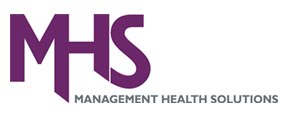A new survey by CareerBuilder found that this year eight in
10 healthcare businesses have been impacted by bad hires, costing companies
thousands of dollars.
In a survey conducted by Harris Interactive for
CareerBuilder, one of the largest online employment companies in the country,
79 percent of healthcare employers reported being adversely affected by a bad
hire in 2012. Thirty-nine percent of those businesses said they estimated the
cost of a single bad hire to be over $25,000 and 22 percent estimated over
$50,000.
The survey, conducted online between Aug. 13 and Sept. 6,
2012, questioned 276 hiring managers and human resources professionals employed
at healthcare companies nationwide.
“All companies make bad hires. It’s inevitable. You can’t
always be 100 percent,” said Jason Lovelace, president of CareerBuilder
Healthcare.
But the cost of bad hires adds up fast, Lovelace said. There
are the financial costs to recruit and train the bad hire and a possible
replacement, as well as “soft” costs, such as the time lost in training and
recruiting bad hires; overall employee morale is impacted, which may drive down
productivity; and there may be legal entanglements and negative impacts on
customers/patients.
Survey respondents classified bad hires as employees who
didn’t produce the proper quality of work; who didn’t work well with other
employees; who had a negative attitude; and who had immediate attendance
problems, among other behavioral- and performance-related issues.
How do bad hires happen? The most common reason cited by
healthcare hiring managers and human resource professionals was the need to
fill a position quickly. The pressure to fill positions as quickly as possible
is compounded by issues of supply and demand, Lovelace said. “The need is so
great to find people with the skills necessary for clinical type positions, or
just healthcare type positions in general,” Lovelace said, “(that) they’re
making bad decisions because they can’t find the individuals that they need.
They’re willing to settle, and typically if you settle, it’s a bad hire.”
While avoiding bad hires is impossible, it is possible to
minimize bad hiring decisions, Lovelace said. Companies need to train their hiring
managers where to find the types of people they need and to figure out what
characteristics to look for in potential hires. It is also imperative that they
put in the time to do due diligence. “Go through the process,” Lovelace said.
“Speed will kill you. … an open position is better than a bad hire.”
Source: healthcarefinancenews
